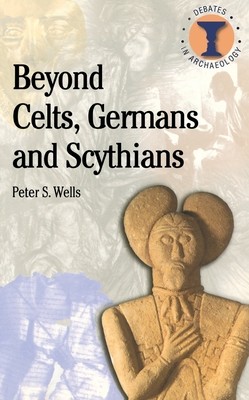
- We will send in 10–14 business days.
- Author: Peter S Wells
- Publisher: Bristol Classical Press
- ISBN-10: 0715630369
- ISBN-13: 9780715630365
- Format: 14.6 x 21.5 x 1.2 cm, softcover
- Language: English
- SAVE -10% with code: EXTRA
Reviews
Description
Who were the Iron Age peoples of Europe? Celts, Germans, Scythians: these are among the names that come to mind. But such names, and the characteristics associated with them, come to us from outside observers - Greek and Roman writers - rather than from their own words. To understand how late prehistoric groups constructed and expressed their identities, the author examines the rich archaeological evidence left by the Iron Age Europeans themselves.
Recent theoretical and methodological advances in anthropology, archaeology and history, together with results of archaeological research all over Europe, provide the basis for a new approach to the problem of the identities of Iron Age peoples. Peter Wells uses patterns of identity revealed in the archaeology to interpret the commentaries of Greek and Roman authors who conveyed their own perceptions of these non-literate groups. Finally, he examines ways in which Iron Age Europeans responded to the Greek and Roman representations of them. The result was an ever-changing mosaic of complex and dynamic identities among the diverse peoples of Late Iron Age Europe.EXTRA 10 % discount with code: EXTRA
The promotion ends in 20d.22:23:53
The discount code is valid when purchasing from 10 €. Discounts do not stack.
- Author: Peter S Wells
- Publisher: Bristol Classical Press
- ISBN-10: 0715630369
- ISBN-13: 9780715630365
- Format: 14.6 x 21.5 x 1.2 cm, softcover
- Language: English English
Who were the Iron Age peoples of Europe? Celts, Germans, Scythians: these are among the names that come to mind. But such names, and the characteristics associated with them, come to us from outside observers - Greek and Roman writers - rather than from their own words. To understand how late prehistoric groups constructed and expressed their identities, the author examines the rich archaeological evidence left by the Iron Age Europeans themselves.
Recent theoretical and methodological advances in anthropology, archaeology and history, together with results of archaeological research all over Europe, provide the basis for a new approach to the problem of the identities of Iron Age peoples. Peter Wells uses patterns of identity revealed in the archaeology to interpret the commentaries of Greek and Roman authors who conveyed their own perceptions of these non-literate groups. Finally, he examines ways in which Iron Age Europeans responded to the Greek and Roman representations of them. The result was an ever-changing mosaic of complex and dynamic identities among the diverse peoples of Late Iron Age Europe.

Reviews